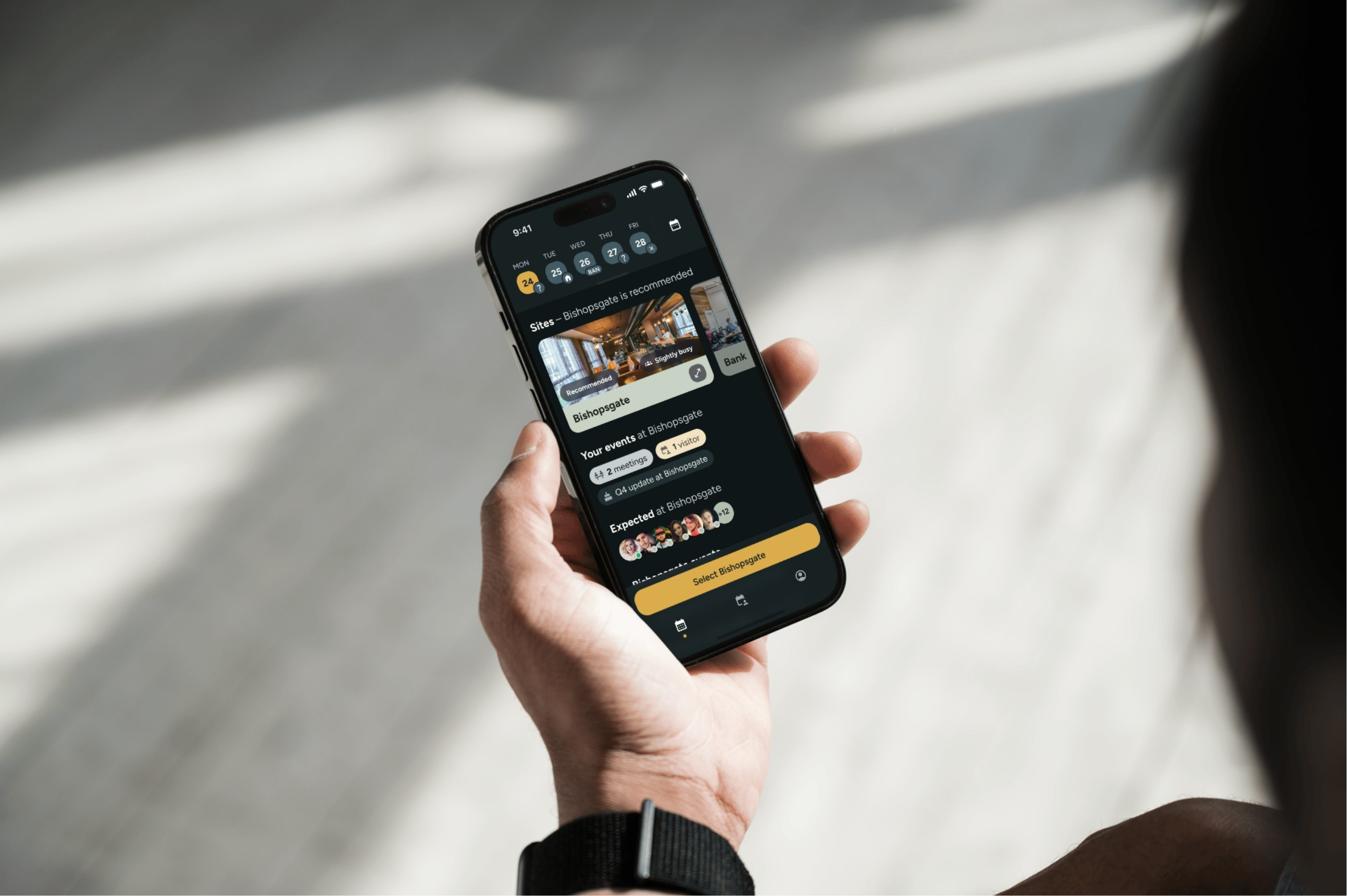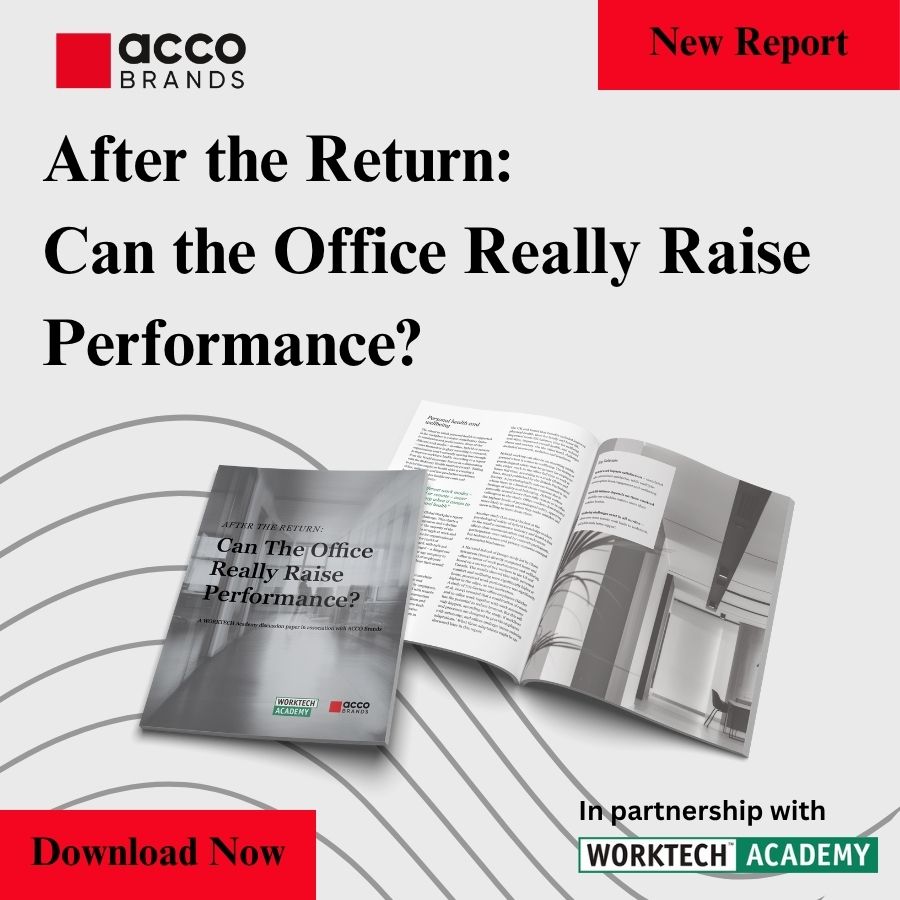From data to decisions: transforming data overload into actionable insights
From data collection methods to meaningful interpretation, it’s time for organisations to understand how to unlock the full potential of workplace data to enhance experience
Companies today are increasingly focused on collecting workplace utilisation data to optimise real estate and create better workplace experiences. However, many of these initiatives fail to achieve their full potential due to shortcomings in data collection methods and, subsequently, the quality of data.
Organisations often rely heavily on access control data to make important decisions about their real estate and workspaces, but this data can lack the depth and granularity required to provide meaningful insights for informed workplace decisions about how and where employees are working in real time.
‘A third of companies feel they lack clear strategy, skills or budget for effective tech deployment…’
The need for workplace data has shifted in recent years, and the emphasis is increasingly being placed on measuring employee experience, space utilisation, and sustainability initiatives. The growing relevance of workplace data in today’s hybrid work environments signals a shift towards informed and data-led decision making, but studies have shown that digital agility is not reaching its full potential. JLL’s Global Technology Survey revealed that 32 per cent of surveyed companies feel they lack a clear strategy, skills, or the budget for effective technology deployment.
Successful data-driven strategies have a clear purpose such as finding the root-cause of a problem or striving to meet business objectives, such as improving employee retention. This strategy will inform what data to collect, how to interpret it, and finally how to action the insights. However, this process comes with challenges throughout, not least because many organisations do not have the required skillsets to execute a data-driven strategy. A study conducted by researchers from the Leipzig Graduate School of Management in Germany found that the majority of responsible executives will fail to foster the data literacy required among employees in order to become a data-driven company.
Creating a data strategy
Aligning data insights with obtainable business goals calls for an acknowledgement and exploration of the challenges associated with data collection and turning these insights into actionable strategies.
Once a strategy has been established, companies must start by addressing their data collection methods. Obtaining accurate and reliable data is critical, which means that sensor malfunctions or data interpretation errors should be taken seriously and dealt with swiftly. Not only can errors lead to a decreased trust in data collection systems, but they can also then translate into a resistance against data-driven initiatives.
Alongside data collection, organisations need to implement a clear change management strategy to ensure that both employees and stakeholders are actively engaged in the process. Instead of imposing data collection on employees, organisations should foster transparency by communicating the purpose of the data being gathered and the benefits it could offer employees. Involving employees throughout the process secures more buy-in and ensures that the data collected is meaningful and beneficial to them.
‘Being able to rely on your data as accurate and reliable is critical…’
When employees understand that the data will be used to enhance their experience such as ensure the availability of meeting rooms and workspaces, they are more likely to see the value in the process. A co-created and transparent approach ensures that the benefits of data collection are realised across the spectrum of stakeholders across the workplace, directly contributing to a better daily workplace experience.
Currently, many access control data collection methods disrupt rather than enhance the employee experience, creating unnecessary friction in their workflow. The issue lies in the cumbersome nature of these methods, often requiring employees to check-in to their workplaces, rooms or desks. Ensuring that the data collection is seamless and integrated helps to improve the workplace experience, turning valuable insights into real benefits for employees.
Adding perspective to your data
Collecting high-quality and relevant data is essential for accurate decision-making, improving operational efficiency and optimising space utilisation. However, not all data – or the methods used to collect it – equates to quality. For example, data collected through WiFi can provide general insights but lacks the precision needed to track movements within small areas, unlike beacons or sensors that offer more granular or accurate data, with the latter also being able to generate data attributable to people.
An important part of leveraging data lies in making sure the insights are accessible to relevant teams. Data dashboards can be an effective way to visualise data, with the most successful dashboards making it easy to consolidate, review, extract and share the relevant workplace data across teams.
‘Effective dashboards help to consolidate, review and extract data…’
Leading workplace experience technology company Accessia is transforming how organisations collect and utilise data to optimise both office environments and business strategies. The platform provides detailed, real-time insights into how office space is used, allowing employers to make data-driven decisions that enhance operational efficiency and workspace design.
By focusing on the dynamics of team presence and space utilisation, Accessia’s platform helps employers understand when teams are coming in and how they interact with various areas of the office. This approach enables organisations to design spaces that better meet the needs of their employees and support collaboration between teams.

For employees, Accessia’s workplace app provides immediate access to pre-booked meeting rooms, relevant workspace information and when best to visit based on who else will be in for meaningful collaboration. This user-centric solution enhances collaboration and ensure that employees are in the right place at the right time, making their time in the office more effective and enjoyable.
Leveraging insights
With the abundance of workplace data that is available to organisations today, there is often the risk of ‘analysis paralysis’ – a phenomenon where the sheer volume of data inhibits decision-making, rather than enabling it. This can be resolved with a clear strategy from the outset.
Having a data collection system that is easy to use is paramount to turn insights into action. Too often, the adoption of workplace data platforms can falter because they are not accessible and require extensive training to use and are reserved for use by teams skilled in handling datasets. Yet, research has shown that the systems that adopt the user experience of a consumer app can better convert data into a more positive decision-making process.
In the context of facilities management – a progressively complex field involving lighting, heating and cleaning – workspace data can become pivotal in managing the different elements. Accessia is currently offering a solution that is providing an increasingly dynamic approach to building management, specifically in terms of cleaning patterns. The data can reveal lighter footfall areas and heavy use spaces, and cleaning teams can adjust their work accordingly. Companies are able to make better informed decisions about space, reduce costs, and even be more sustainable.
Making the office a worthwhile place to visit requires various interlinking factors. To untangle the complexity of designing great workplace experiences, organisations rely on data to ensure that employees can come together to work with the right people, in the right spaces, and be able to foster meaningful connections.








